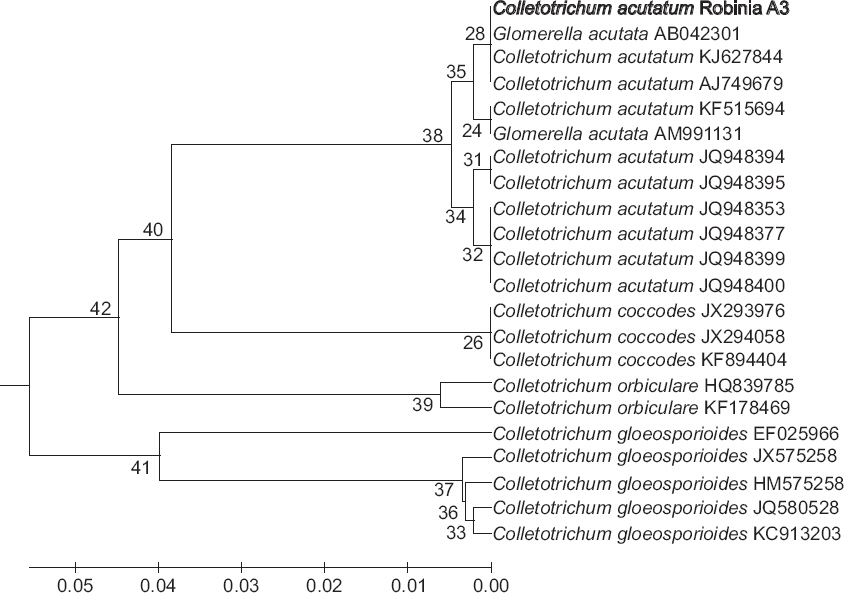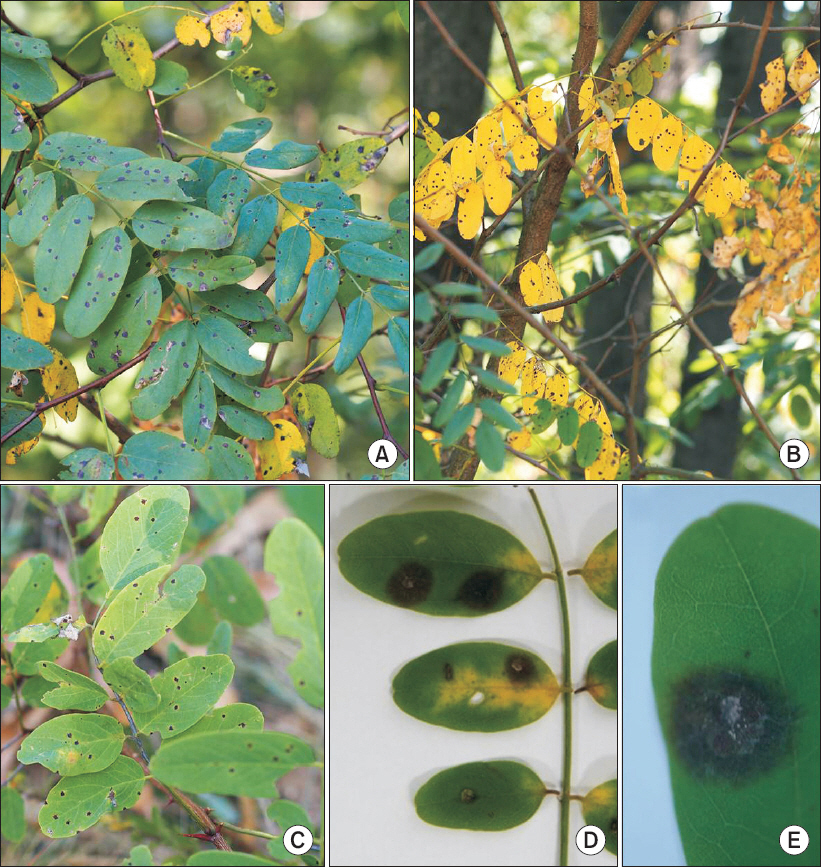Damm, U, Cannon, P. F and Crous, P. W Colletotrichum: Complex Species or Species Complexes? Studies in Mycology, No. 73. 2012. Utrecht, Netherlands. CBS-KNAW Fungal Biodiversity Center, pp. 55 pp.
Han, J. H, Shim, H, Shin, J. H and Kim, K. S Antagonistic activities of
Bacillus spp. strains isolated from tidal flat sediment towards anthracnose pathogens
Colletotrichum acutatum and
C. gloeosporioides in South Korea.
Plant Pathol. J 2015. 31: 165-175.



Han, K. S, Park, J. H, Han, Y. K and Hwang, J. H Pathogenicity and occurrence of pepper seedling anthracnose caused by
Colletotrichum acutatum.
Res. Plant Dis 2009. 15: 88-93. (In Korean)

Hong, J. K, Yang, H. J, Jung, H, Yoon, D. J, Sang, M. K and Jeun, Y. C Application of volatile antifungal plant essential oils for controlling pepper fruit anthracnose by
Colletotrichum gloeosporioides.
Plant Pathol. J 2015. 31: 269-277.



Kim, S, Park, S. Y, Kim, H, Kim, D, Lee, S. W, Kim, H. T, Lee, J. H and Choi, W Isolation and characterization of the
Colletotrichum acutatum ABC transporter
CaABC1.
Plant Pathol. J 2014. 30: 375-383.



Kwon, J. H, Nam, M. H and Park, C. S Anthracnose of Salvia plebeia caussed by Colletotrichum acutatum in Korea. Res. Plant Dis 2007. 13: 119-121. (In Korean)
Lee, J. S, Lee, K. H and Oh, C. J New woody plant flora of Korea. 2010. Seoul, Korea. Research Information Center, pp. 539.(In Korean)
Lim, K. B A study on the development of new demand for utilizaion and silviculture in Robinia pseudoacacia. 1994. Korea Forest Service, Daejeon, Korea, pp. 211.(In Korean)
Sutton, B. C The Coelomycetes. Fungi Imperfecti with Pycnidia, Acervuli and Stromata. 1980. Kew, UK. Commonwealth Mycological Institute, pp. 696 pp.
The Korean Society of Plant Pathology. List of Plant Diseases in Korea. 2009. 5th ed Suwon, Korea. The Korean Society of Plant Pathology, pp. 853 pp.
White, T. J, Bruns, T. D, Lee, S. B and Taylor, J. W eds. by M. A Innis, D. H Gelfand, J. J Sninsky and T. J White, Amplification and direct sequencing of fungal ribosomal RNA genes for phylogenetics. In: PCR Protocols: A Guide to Methods and Applications, 1990. New York, NY, USA. Academic Press Inc, pp. 315-322.







 PDF Links
PDF Links PubReader
PubReader Full text via DOI
Full text via DOI Download Citation
Download Citation Print
Print






